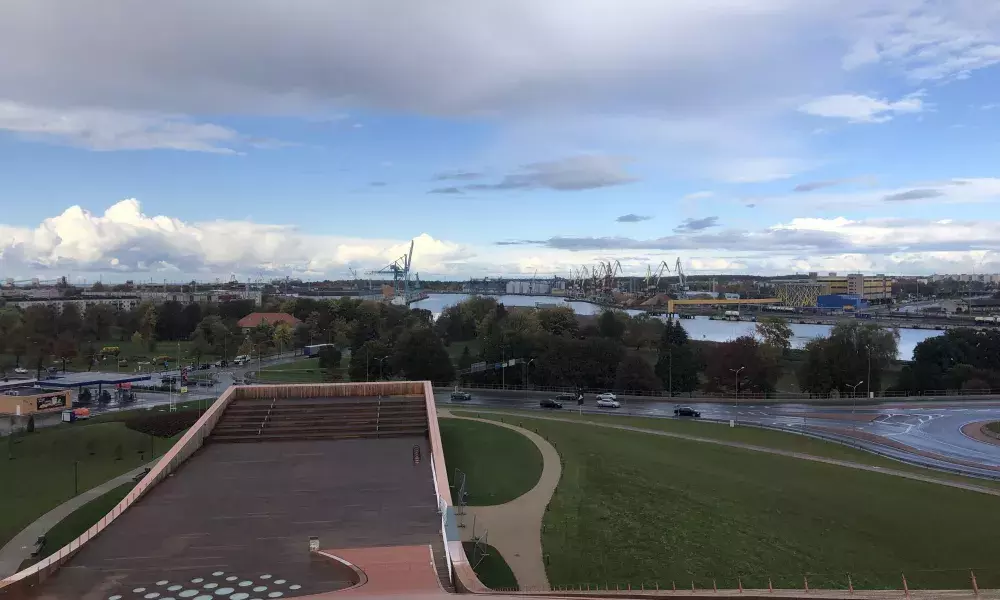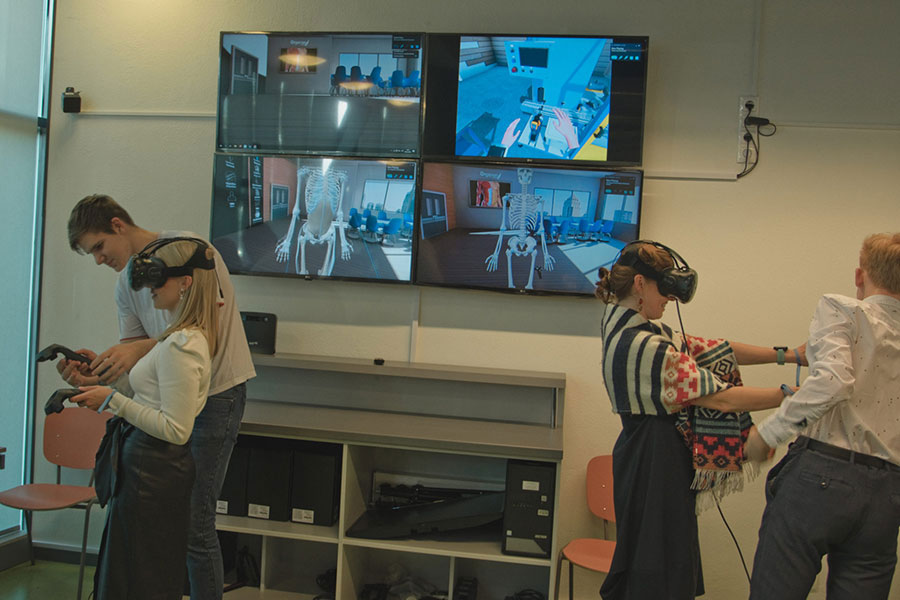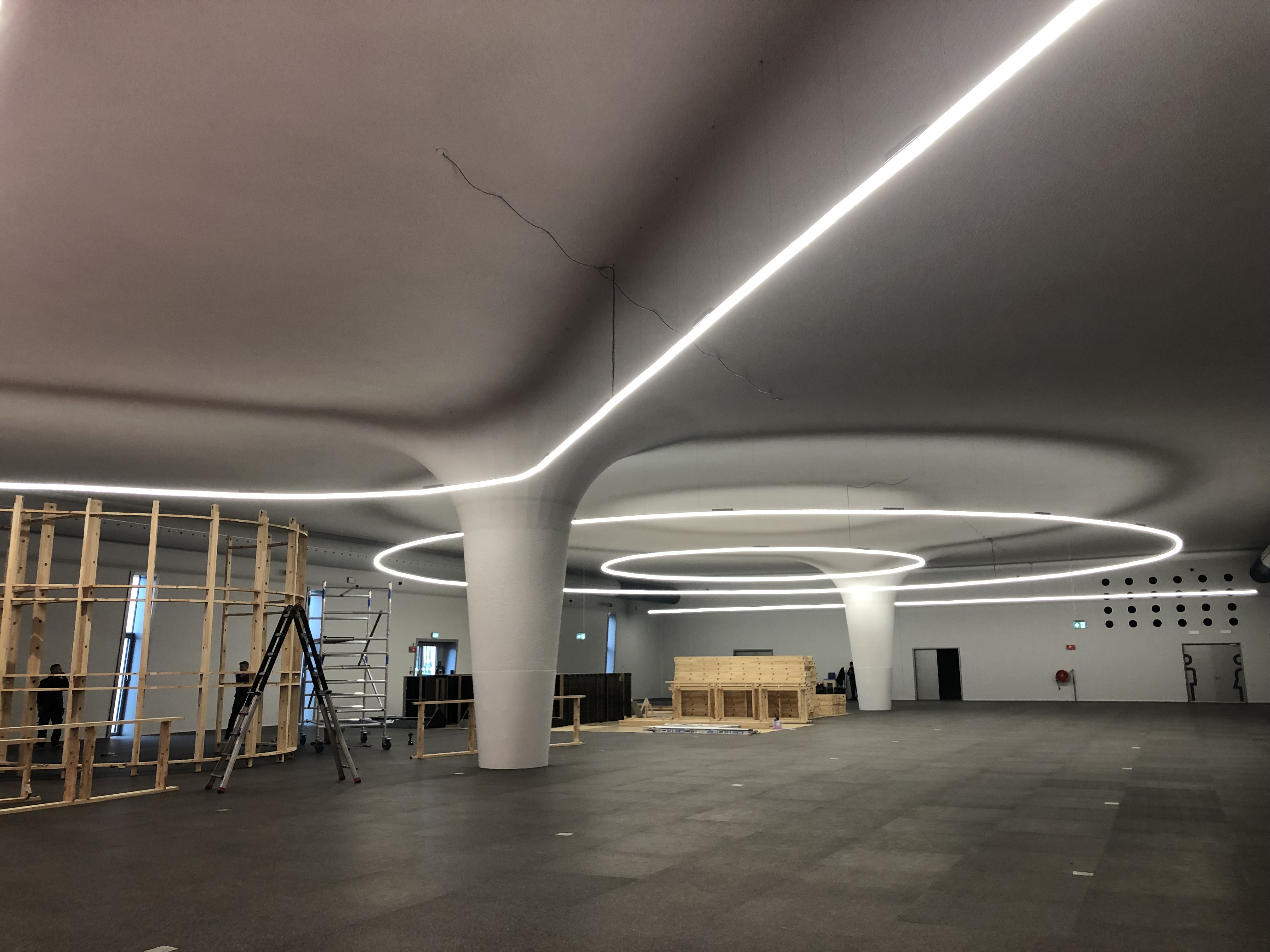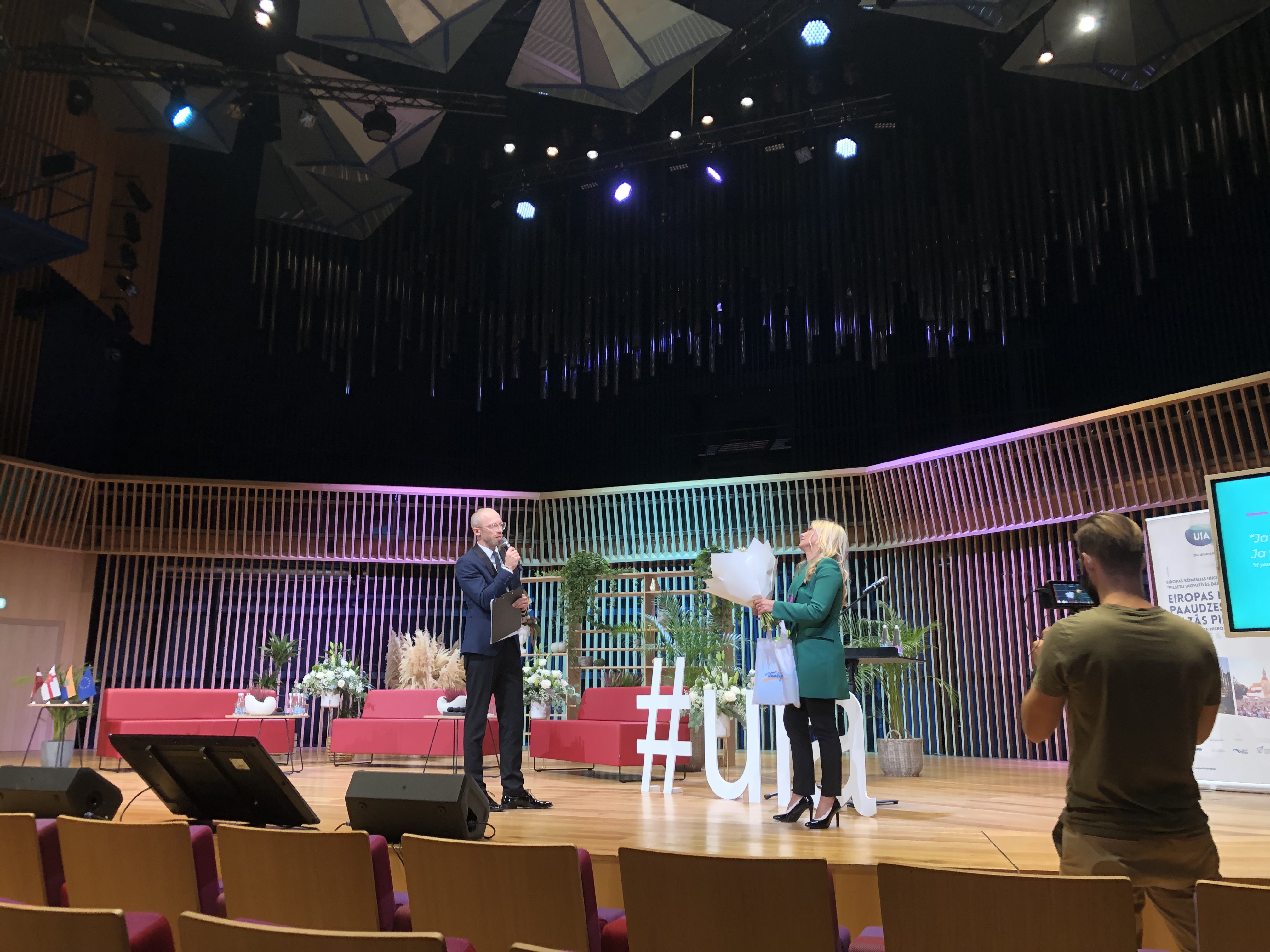
1. INTRODUCTION & EXECUTIVE SUMMARY
For both Ventspils and Valmiera, as for many other small and microcities in Europe, the challenge is twofold: on one side the need to increase the demand for highly qualified digital workers by supporting the evolution of the business environment and the ability of SMEs to compete in the larger global arena; on the other the need to both prepare future generations for a very different labour market, and at the same time to attract talent from outside, reversing the negative population trend. These two micro cities in Latvia are playing a big gamble: to pilot new and innovative solutions for developing a next generation economy in European micro cities. The ambition of the NextGen Microcities project is to develop a blueprint model for enhancing both the demand and offer side of the labour market by simultaneously acting on multiple system points of the local economy, trying to shift it from an industrial based one to a digital based one. Now towards the end of the third year of implementation, the project has completed a number of innovative activities, in an integrated way, and look into the future of its sustainability. This journal provides some project updates and focuses on the seven implementation challenges of the UIA challenge framework for cities.
2. PROJECT UPDATES

NextGen Microcities has formally ended as an UIA funded experimentation after three years of hard work. For one more year, partners are committed to keep disseminating the results of the initiative, but for the next few months the team will be busy reporting and accounting about the investment and the results achieved. After the summer the team started to wrap up final activities, and organized the grand finale event in Ventspils on 13th October, which I have covered in my last article that can be accessed here.
During the last year, all planned activities were brought to completion, apart from the Smart Technology Gallery to be displayed in the newly built Science Gallery in Ventspils, which will open officially next year. Although the brand-new large building is ready, the eight galleries are currently still under design phase, except for the one contributed by NextGen which is ready and installed. NextGen is one of the few UIA initiatives from the same cohort that did not ask for a contract extension. Although COVID – 19 slowed down inevitably the project implementation in the first lockdown phase, it did not manage to stop it, and the team kept a good pace of coordination, as it was already used to work remotely, given the peculiar partnership coming from two different cities 3.5 hours away by car from each other. I have covered thoroughly the impact of COVID – 19 on the project’s implementation in my first Zoom-in.

2021 was also the year of advancement in the FDI – Foreign Direct Investments strategy and marketing activities.
FDI project activities included for Valmiera:
(1) the development of the concept for industrial territories for FDI to be attracted;
(2) the development of FDI marketing and communication plans that included innovative, microcities appropriate marketing approaches.
Ventspils FDI marketing activities included:
(1) analysis of the opportunities offered by global networks and digitalisation; global best practices and latest trends were reviewed and solutions suitable for MicroCities identified;
(2) the development of an FDI attraction marketing plan and marketing materials for the implementation of the FDI attraction program in Ventspils. Marketing materials that were developed include:
Two websites with information on the industrial and investment outlook for the two cities, and support services for both startups and SMEs that would like to relocate:
http://startinventspils.lv/en/
https://www.investinvalmiera.eu/
Two videos promoting Ventspils and Valmiera as FDI destinations in Europe:
https://www.youtube.com/watch?v=VAdaxZ01NtE
https://www.youtube.com/watch?v=tqJXU8vhAOk&t=12s
Social media accounts were also opened as an additional marketing channel for the promotion, here follows the one for Start in Ventspils: https://www.facebook.com/startinventspils/
On the promotional side, a 2h webinar for investors was organised on 08 SETT that touched upon the following items:
• How to understand if your company is ready for international expansion
• Is your product or service appropriate for foreign markets
• What operational challenges will you face if you decide to expand abroad
• What is needed in your management team and structure to increase chances of success.
The webinar was promoted also through social media and was well attended.
The project planned also for an Investors’ Summit. This measure was canceled because of severe restrictions in Latvia due to Covid19, but the municipality has decided to organize it in May 2022, at its own expense. The event was planned as an investor summit, where potential investors (at least 30) will come from different countries and during the 3-day event they will get acquainted with Ventspils' offer, listen to innovative start-ups’ pitches and discuss about their potential ideas.

3. CHALLENGES
OVERVIEW OF CHALLENGES
According to the UIA framework for challenges in implementation of complex innovative projects in cities, there are seven dimensions that cities must take into account when planning and delivering change. In this Journal, we update the status of the project in relation to these seven dimensions (Table 1).
|
Challenge |
Risk level |
Observations |
|
1. Leadership for implementation |
Low |
The diversity of competences of the NextGen team is the best premise for the strength needed by a team in order to govern such a complex innovation project.
|
|
2. Public procurement |
Medium |
The NextGen Microcities project has a significant portion of the budget allocated to procurement for the purchase of technical equipment for EdTech in Schools and the Makerspaces, as well as for building the Multifunctional Facility in Ventspils, which shows a twofold challenge of building it in time and in an innovative way that would also respect the principles of innovative procurement.
|
|
3. Organisational arrangements |
Low |
Both municipalities involved in the project display a good understanding of the risk of functional specialisation and silos within the organisational boundaries and display a good culture of cross collaboration across cities’ departments.
|
|
4. Participative approach |
Medium |
This has shifted from “low” to “medium” risk because of the Covid 19 crisis. The delivery partnership encompasses a wide range of organisations possessing complementary competences for the delivery of a very rich spectrum of activities. Regular online meetings allow for the partnership to stay connected during the lockdown and ensure good alignment in the progress of activities.
|
|
5. Monitoring and evaluation |
Low |
The NextGen Microcities project has set clear impact indicators for project’s results and designed a good monitoring and evaluation process to measure them.
|
|
6. Communicating with target beneficiaries |
Medium |
It is the essence of this kind of projects to be able to collect and take into account feedback, suggestions and proposals from target users. Most importantly, when dealing with crucial topics like in the case of the NextGen project, it is crucial to engage citizens in the proposed solution as the acceptance of the project’s mission is key to maintain political support. In this regard, the project has designed a good communication campaign.
|
|
7. Upscaling |
Medium |
Both Ventspils and Valmiera have planned since the beginning to address this challenge via the ambition to pilot a model that can serve the same cause in other microcities around Europe, and possibly beyond. It is going to be then very important to assess the project in a way that will interpret the variety of activities involved in a systemic way, in order to shed some light on a potential standard model which, taking into account inevitable differences in different local contexts, can help other decision makers in similar sized cities around Europe to make sense of it and try and implement all or part of the model in their respective local contexts. |
We are now going to elaborate on each of the seven challenges.
LEADERSHIP FOR IMPLEMENTATION
The leadership of the NextGen project has been strong and hierarchy in the project’s partnership was clear from the beginning. Project’s partners evidently appreciated the Municipalities’ leading role as well as their commitment towards innovation and local development. Strengthening the project’s capacity to engage the higher administrative levels successfully continued for the whole duration of the project. Both Municipalities involved kept on taking advantage of the visibility given by leading a UIA project to further build their reputation in the country and abroad. This is a consequence of the political support provided by the local administrations and of the active promotion of NextGen operated by all project’s partners.
Urban authorities shall use the visibility gained through the implementation of UIA projects to increase their reputation, both nationally and Europe-wide. UIA projects should be truly aligned with the policy goals of the implementing administrations, as it was the case with NextGen. This allows the creation of a positive feedback loop process where projects provide visibility and new opportunities to municipal administrations, and in turn the latter promote and support their projects.
At the project level, strong leadership is requested as well. Right from the start, the project lead has focussed on leaving each partner own responsibility on their tasks and trusted that they will organise themselves. This created indeed ownership, enthusiasm and trust.
PUBLIC PROCUREMENT
Public procurement is often perceived as an administrative procedure, but also increasingly considered as a powerful leverage to promote innovation, achieve socio-economic and environmental policy objectives whilst addressing societal challenges. The NextGen Microcities project had a significant portion of the budget allocated to procurement for the purchase of technical equipment for EdTech in Schools and the Makerspaces, as well as for developing one of the galleries to be displayed in the upcoming Science Center in Ventspils.
But public procurement for innovation is not easy, and sometimes conventional procedures do not work effectively within an innovation project. Outlining solutions, rather than prescribing them, by describing the desired qualities and functions can be of help. More time is needed for preparing the tender and for the procurement process of innovative solutions as many new aspects compared to typical conventional solutions are included. Time is also needed for gaining additional knowledge and dealing with uncertainties, as well as convincing affected stakeholders that are hesitant to go along with innovative solutions.
Accounting for over 14% of GDP, EU public procurement could create a huge market for innovative products and services, but its potential in this area remains underutilised.
Pre-Commercial Procurement (PCP) is one innovation in public procurement that can help with that. It in fact challenges industry from the demand side to develop innovative solutions for public sector needs and provides a first customer reference that enables companies to create competitive advantage on the market. PCP enables public procurers to compare alternative potential solution approaches and filter out the best possible solutions that the market can deliver to address the public need.
Public procurers can drive innovation from the demand side by acting as technologically demanding customers that buy the development and testing of new solutions. This enables European public authorities to modernize public services faster and to create opportunities for companies in Europe to take international leadership in new markets. Creating a strong European market for innovative products and services is an important step towards creating growth and jobs in quickly evolving markets such as ICT.
ORGANISATIONAL ARRANGEMENTS
The NextGen project was an integral part of the Municipalities’ activities. It in fact added value to the institutional activities of the municipalities involved whilst not disrupting their organisational structures. Although, as any project of this size and complexity, it implies a relevant workload for municipal staff, the project seldomly suffered from lack of support from municipal offices, as it was recognised for the value it was bringing to the table and possibly an almost “one-off” opportunity for the cities involved.
At the same time, co-management did not undermine either of the cities’ ownership of the project. Project co-management did not affect the level of project’s ownership within each of the urban authorities involved. This is because the leadership of the project manager assigned to NextGen was strong and able to ensure real equal engagement, and benefits, to the two cities involved and corresponding local partners.
PARTICIPATIVE APPROACH
A lesson learned over the course of the last three years has been that, due to substantial knowledge gap among citizens on the digital transformation and its potential benefits, intensive communication is necessary. Furthermore, for citizen engagement, sustained contact is important as it can take a long time (years in many cases) to develop strong and trusting relationships. Participatory programming that facilitates conversation/dialogue between partners and stakeholders can help to demonstrate the value of citizens involvement.
As stated before, COVID-19 has partially affected the participatory approach, as physical meetings of partners and stakeholders have not been possible, but the team has easily found ways around this with virtual meetings and tools. These proven to be effective ways of maintaining engagement with groups already engaged, but it proved harder with new groups.
It is important to keep coordination mechanisms flexible so that they adapt to the needs of the project which are inevitably different at the beginning and towards the end of the implementation period (in 2020, this same flexibility allowed the project to adapt to the challenging circumstances caused by the pandemic). Coordination mechanisms may be used as instruments to guide implementation, engage staff members and share responsibilities among partners.
One important aspect to underline is that the project managed to interact directly with a number of target beneficiaries involved in its activities: from summer camps and STEM workshops for youngsters, to community events for relocating talents and their families in Ventspils. This social capital developed thanks to the project must be now put at the service of its future sustainability.
MONITORING AND EVALUATION
To create a suitable monitoring and evaluation framework, a long and hard work has been done by the partnership focusing on indicators. This required the joint definition of the key dimensions of the work to be monitored and evaluated. With the help of partners with different backgrounds, it was important to invent mechanisms to connect the data collected with indicators defined and the identified impact of the project’s actions.
It was important to identify which were the relevant data for the development of the pilot actions, and which were the ones important to describe the cause-effect connections needed for the evaluation.
Since the last reporting period, there is now evidence of the existence of a monitoring system based on result indicators. Still, this system seems unable to inform the project on its impact on the territory. For this reason, the challenge has still to be considered open for the future. As a matter of fact, the very notion of trying and capture result indicators on impact for a project that acts on long term development variables seems quite difficult to conceive in the first place. Possibly, this is a lesson that should inform future UIA initiatives trying to impact on similar “intangible” impacts such as human capital development in a territory.
COMMUNICATING WITH TARGET BENEFICIARIES
Communication activities, and citizens engagement as well, in general have benefited from the existence of several appealing touchpoints, both physical and virtual, as they have proven to be amplifiers for the outreach of targets on the project impact.
For instance, the experimental Education Technology facilities implemented in both partner Universities managed to get to the project not just visibility. They in fact acted, and will continue to act, as a communication channel towards the professors and students that will use them. The same applies to the VR classroom implemented in the schools partner of the project. For those, the marketing strategy implemented to attract students, and related materials and channels, will continue to perform a function after the formal end of the project. The same applies for the career guidance internet portal providing information on job opportunities and living standards in the two micro cities, or for the micro sites developed for FDI attraction, and related promotional videos and social accounts.
The list could go on, but the point on the challenge here is that whilst the project articulated a series of interventions that relate to each other under a common strategy, the project communication had to move on two levels: the level of the “institutional” promotion of the project, and the level of communication to specific targets of beneficiaries. For the second, notwithstanding the variety of tools and touchpoints implemented, the sense of an overall “file rouge” emerges strongly because the overall strategy of the project permeated clearly all activities since its inception.
UPSCALING
Moving towards project end, NextGen Microcities is in the critical phase to consolidate its activities for upscaling. A systematic approach listing all achievements, results, and options for their further maintenance, dissemination, and upscaling is under development at the time of writing.
Both Ventspils and Valmiera have planned since the beginning to address this challenge via the ambition to pilot a model that can serve the same cause in other microcities around Europe, and possibly beyond. This pilot will have now to move to mainstream and, if possible, to upscaling.
One very positive note about this specific challenge is about the investments made thanks to the project on capital assets: human, infrastructures, new knowledge. The entire NextGen can be conceived as ONE investment made on several strands with a clear idea of what future to build for the cities involved and their local ecosystems for innovation. Of course, the next step in the challenge will be to use these investments wisely and build upon them. In this regard, both municipalities have declared some level of commitment to this, and stated their intentions in the final event that took place in Ventspils. From current outlook, it seems that both municipalities will keep moving in the direction of reinforcing both STEM education for youngsters and Foreign Direct Investments attraction, together with their respective Development agencies. Higher Education and School partners have already committed to expand internal use of the EdTEch facilities and classrooms built thanks to the project.
4. CONCLUSIONS

As with many other projects, NextGen has been challenged in many areas of the project by the contact restrictions due to the COVID-19 pandemic. Fortunately, the project had started before the pandemic and the team had many processes to facilitate collaboration already in place. Thus, the team could manage the crisis by finding new ways of working, which even included positive results such as stakeholders’ high levels of support for the variety of project activities implemented.
NextGen Microcities is an interesting and unique experiment in Europe today. It brings together many different elements of what it means to try and shift a whole local ecosystem towards a different local economic development model, in the recognition that in today’s global landscape, the competition for resources and wealth has moved away from traditional assets and is geared towards the development of human capital and its ability to turn digital technologies into new successful digital businesses.
About this resource
The Urban Innovative Actions (UIA) is a European Union initiative that provided funding to urban areas across Europe to test new and unproven solutions to urban challenges. The initiative had a total ERDF budget of €372 million for 2014-2020.
Similar content




